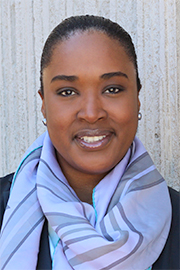- Nov/30/22 4:50:00 p.m.
I would like to start my remarks by thanking the member for Oakville North–Burlington for bringing this motion forward. It is a motion that deals with a very serious issue, the issue of domestic violence, and it deserves full support from all of us.
I understand that this motion is inspired by Keira’s Law, a federal bill that passed in the House of Commons on June 1 of this year, with unanimous support of the whole House of Commons. The bill is currently at the second reading stage before the Senate.
The bill requires a justice to consider whether someone charged with intimate partner violence should be required to wear an electronic monitoring device, but more on point with the current motion, the bill also provides for continuing education seminars for judges on matters related to intimate partner violence and coercive control in intimate relationships.
The story behind this legislation is unfortunately one that is too common. Thanks to the determination of Keira’s mom, Jennifer, we now see Parliament taking action, and we need to do the same.
Keira was her four-year-old daughter, and she was found dead with her father on February 9, 2020, at the base of a cliff at Rattlesnake Point conservation area in Milton, Ontario. It is believed that this was a murder-suicide. The father, Robin Brown, had been abusive for years previously. The mother, Jennifer, sought protection for Keira through the courts. She expressed concern with her ex-husband’s violent behaviour. Unfortunately, like it was mentioned before, she was not taken seriously, with the judge saying that the domestic violence and coercive control of Mr. Brown were actually not relevant to Keira’s custody.
When I say this kind of story is too common, I mean that 30 to 40 kids are killed by their own parents every year in Canada. Some of the responsibilities fall with the courts, because they are failing the victims, because judges don’t have the proper training. Without the science of domestic violence, judges are ignoring clues that could help avoid such tragedies. Science cannot be infused, even for judges; it needs to be learned by those who have the power to make a difference.
All judges understand that in any domestic dispute, the interest of the child needs to be the priority. However, the interpretation of what this interest is can be wrong if the judge is thinking that the child must be able to see both parents and that fact supersedes any consideration of domestic violence. Domestic violence is not necessarily visual physically, and that’s why training is important. Training is not only important, it is critical.
I had the opportunity to speak to Jennifer just two days ago. She’s a brave mother who has shown great determination in bringing forward a proposed solution, not for her, because for her it’s too late, but to protect other children and parents from the infinitely tragic situation she has endured and the pain she continues to suffer. There is no more terrible loss than losing a child. We cannot let Jennifer down, no more than we can let down the children and parents who are at risk every day in this province.
The motion is a great first step. When I spoke with Jennifer, she said she’s grateful and she’s encouraged by this, so I’m totally supportive of this effort by the government. But we need to go further. We need to have conversations with the judiciary and the chief justices about the importance of making this a priority.
I spoke to the member for Oakville North–Burlington and to the Attorney General earlier this week, and I want to reiterate my offer to help and to collaborate with the government on moving this forward, to see concrete changes in our legislation.
Again, I want to thank the member for Oakville North–Burlington for bringing this motion before the assembly of Ontario.
- Hear!
- Rabble!
- Nov/30/22 5:00:00 p.m.
I rise today to say thank you and to also add my support to the motion from the other member: intimate partner violence continuing education in Family Court. We absolutely need to continue education for everyone who is within an inch’s length of being associated with intimate partner violence, gender-based violence etc.
What I want to start by saying is, violence against women and children is about a power imbalance. It’s about someone wanting to use their power to diminish another. I think what we have to do is use legislation to build up women and children so they can feel safe, so they can feel empowered to get help, to be able to access help to get out of the situation. Now, it can’t just be on the women’s and children’s shoulders. It has to be on the system’s shoulders. We have to address this systemically.
I had a conversation with many members—a couple of dozen members, it felt like—from OAITH, staff members and board members, and it stuck out to me when one member of OAITH said that in their organization, there is one Family Court worker for 260 clients—one Family Court worker. Another person in this group of warriors who are doing Herculean work on a shoestring budget said they had lost funding for their child care respite worker, which creates a huge barrier for women, whether they’re trying to get to a job interview or if they have to get to court. The bottom line is, we have to fund the selfless people, the organizations, the community-based resources that are literally helping women and children out of intimate partner violence, out of gender-based violence.
And I will say this to the government: I understand that there have been years where there has been a bit of latitude that’s been given to shelters and organizations to use their budget as they see fit. I want to stand here and say that that worked and that allowed organizations to be able to use the money where it was necessary: an extra staff person, not having to pay for transportation if that’s not what they need. What they need is important and they are the experts of what they need in their sector, and of course the lived experience of survivors—they are the ultimate experts, as well.
So we need to ensure that there’s annualized funding to support organizations. We need to ensure that this government isn’t cutting any more from legal aid, as they have in the last recent years. But most importantly, we need to listen to survivors.
I want to share with you some excerpts from N.M. She gave me permission to read it, but I’m just going to keep her name confidential. N.M.’s story: “I have an 11-year-old boy now, and I spent about 10 years of his life in court. Just this week, I received yet another threat from his dad.
“I’m honestly not sure how many court orders I have at this point, but I can say for certain that none of them have been particularly useful, and all it does is cost me money. The courts only recognize overt physical abuse as abuse. Anything else is insignificant, which is hugely problematic.
“Time and time again I was told that my experience of abuse is ‘irrelevant’ and that I need to put that behind me and put my child’s interest first.
“Continuing on the above point, as a woman who left an abusive relationship, having authorities ... push that message continuously is very demeaning/diminishing ... I have put my child first by leaving the relationship, and from my perspective, exercising caution with an abusive man is another way of putting my child first....
“I have several court orders demanding him to release his financial disclosure, and not once did he release his financial disclosure....
“There is no way for me to enforce him paying child support, without paying additional legal fees, and even if I do go that route, there’s still no promise that he’ll have to pay....
“If I get upset in court (and what kind of emotionless monster wouldn’t feel emotion when talking about the fate of their child)”—when one is escaping violence—“I’m seen as irrational and weak, while the ... ‘cool as a cucumber’ dad can smirk at me from across the courtroom and win the judge’s favour.”
We need “gender sensitivity training for all Family Court staff, lawyers, and judges, domestic abuse training for all of the above, as well as children’s aid workers and police.
“I have ideas on what can be done to address this massive systematic and invisible problem, and they include ... more awareness of narcissistic abuse” and emotional abuse as abuse.
The last thing I want to say: These organizations need more staff. They need more angels to do this work, because, as one member said, they don’t want to have to call the police. That is a last resort. It’s about having the counsellors. It’s about having the mental health supports and the staff there who can take a trauma-informed approach. That is the way to go, but all of that requires funding. You all are in power. You all have the dollars. Spend them where it counts: on women and children’s lives.
- Hear!
- Rabble!
- Nov/30/22 5:00:00 p.m.
I’m pleased to be able to support the motion from my colleague representing Oakville–North Burlington, in particular that the government should consult with the public and its partners in the Family Court system to promote, and ensure the availability of, continuing education seminars for professionals in the Family Court system.
One such partner who can assist the government with this critical consultative and continuing educational process is Luke’s Place, situated in Oshawa in the region of Durham, who I have worked with for a number of years at a number of levels, some personal. Luke’s Place Support and Resource Centre for Women and Children is a non-profit centre of excellence devoted to improving the safety and experience of women and their children. They’re the only stand-alone family law support centre in Canada for women who have been subjected to intimate partner violence. They provide direct services to hundreds of women and their children every year and share their expertise with other stakeholders, as cited in the motion, through training programs, resources, tools, research and mentoring.
What’s clear, as statistics and reports have highlighted, as well as the member from Oakville North–Burlington, is violence against women increased and intensified under COVID-19. I saw evidence of that, unfortunately, in the region of Durham.
Speaker, I am pleased to say that Luke’s Place stands ready and able to help effect the intent and purpose, the important purpose, of the motion before us this evening.
I thank my colleague in Oakville North–Burlington for bringing this important motion before us this evening. I urge all members here tonight to support it as well.
- Hear!
- Rabble!
- Nov/30/22 5:10:00 p.m.
I am grateful for the opportunity to rise today to support this important motion put forward by my colleague.
Domestic abuse can take many forms and is almost always related to power and control in the relationship.
Knowledge is power, and by knowing more and educating ourselves on the signs of intimate partner violence and coercive control, we put ourselves and our judicial system in a better position to help protect women and children in abusive relationships.
Gaps in education can have devastating and painful repercussions, as was the case with Keira Kagan, who was killed by her father. Keira’s mother, Jennifer, repeatedly warned judges of the danger Keira’s father posed to them. Keira’s Law, Bill C-233, is currently in the Senate. If there was sufficient training of court officials to identify violent tendencies and the dangers of coercive control, Keira’s case may not have had such a tragic ending. It’s imperative that lawmakers, enforcement officers and judicial powers recognize and know the signs. In order to do this, training is required.
To become an accredited mediator in Ontario, a person would have to do 21 hours of domestic violence training. This is mandatory training, which is required to be updated every year for five years. However, judges do not have to complete this training, and this is where the gap is.
Families put their trust in the court system, hoping that those making the decisions have the knowledge and the understanding it takes to identify violence and abuse in a family situation, because abuse is not always physical and violence doesn’t always present physically. Coercive control can look different in each and every case and can include things like isolating one from friends or family, monitoring communications or tools and depriving one of basic needs. For children, this can look like yelling, rejecting them, brainwashing, thought reform or turning one parent against another. These behaviours can also lead to challenges for children in their adult lives. Victims and survivors of coercive control often struggle with their own mental health, including PTSD, stress, anxiety, eating disorders, substance and alcohol abuse or even repeated cycles of violence and coercion.
The judicial system needs to start recognizing that abuse isn’t just physical; it can be subtle, humiliating, through intimidation, threats, control over finances and liberties. It’s power over the victim. We need to do more and do right by victims and children escaping these situations. Long after the abuse has ceased, the effects on families remain, and the trauma outlives the actual violence and the abuse. We need to make sure that judges, justices of the peace, social workers, mediators and decision-makers are helping to end the cycle of abuse with the appropriate training to handle difficult family cases.
Yesterday, Minister Fullerton spoke about November being Woman Abuse Prevention Month and how the purple scarf is a symbol of the courage it takes for women to leave their abuser.
To protect women and children, all levels of the system need to be trained on intimate partner violence and coercive control. Together, we can make a difference in the lives of victims and in the lives of survivors. Thank you to my colleague from Oakville North–Burlington for bringing intimate partner violence and coercive control to light.
- Hear!
- Rabble!





